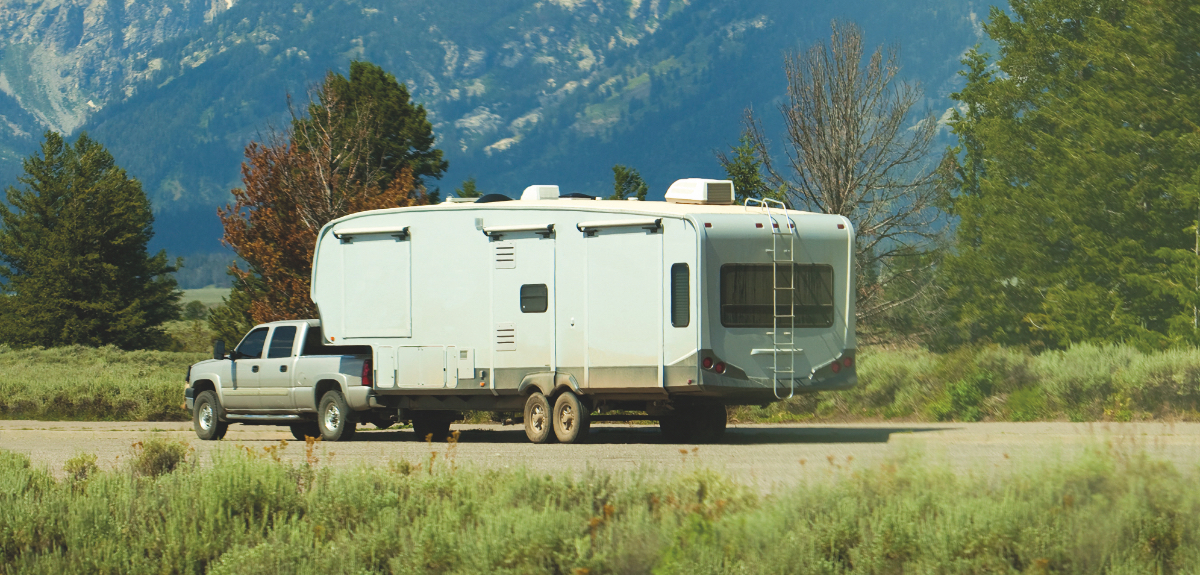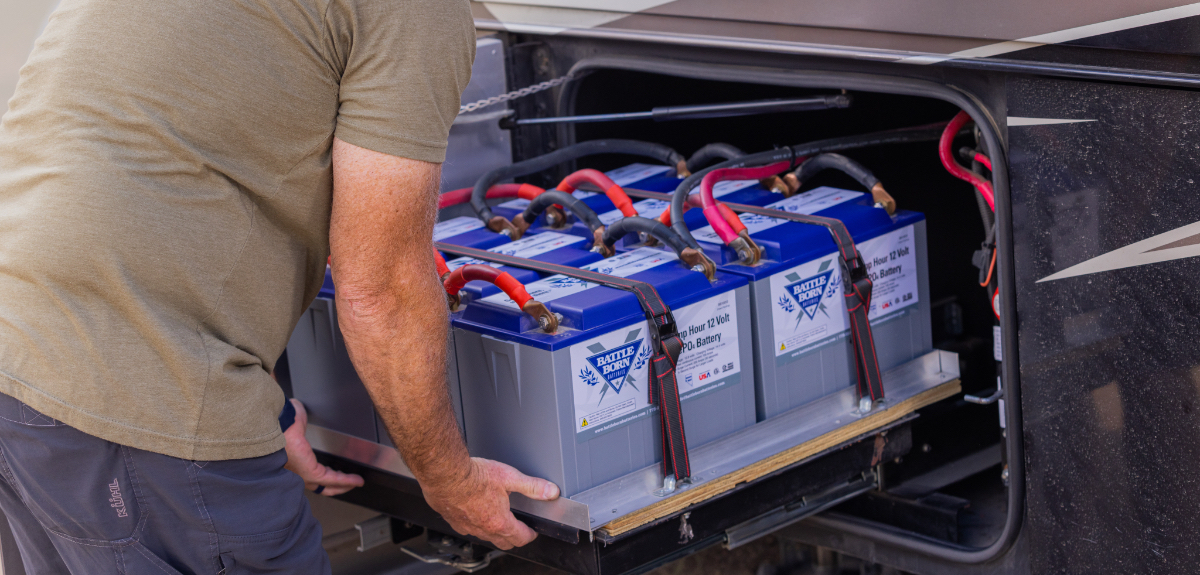A Winter RV Storage Checklist
A little care and preventative mainenance now will keep your RV safe in the winter ahead.
Image Caption: Image Courtesy of MAD.vertise/Shutterstock
As winter draws closer, many of us will bid farewell to our faithful traveling companion (that’s your RV) for a few months. But fear not. Showing your RV some love right now will ensure that it’s ready for fun again once the flowers start to bloom.
The term “winterizing” can mean different things to different people, depending on where you live and how you store your rig at the end of the camping season. If you live in a sunny southern state and your RV is in a carport next to your house, very little is necessary to prepare it for the off-season. In fact, there may not even be an off-season. On the other hand, off-site storage in cold, wet, windy or otherwise inhospitable climes requires more due diligence to protect your RV from the evils of broken pipes, water intrusion, and other forms of damage.
Below is a detailed list of areas to pay attention to before putting your motorhome or travel trailer away for a long winter’s nap. Check all that apply.
Clean Up Inside
Sweep, vacuum, and otherwise clean the interior. Empty the cabinets and pantry of food and crumbs. This will not only make for a fresh-smelling living space when you return for your next trip in the spring, but it will also make your RV less attractive to rodents and insects. Speaking of which, there are a number of recommended, humane ways to keep critters out — from peppermint oil and various potpourris to Kanberra gel, wipes, and spray.
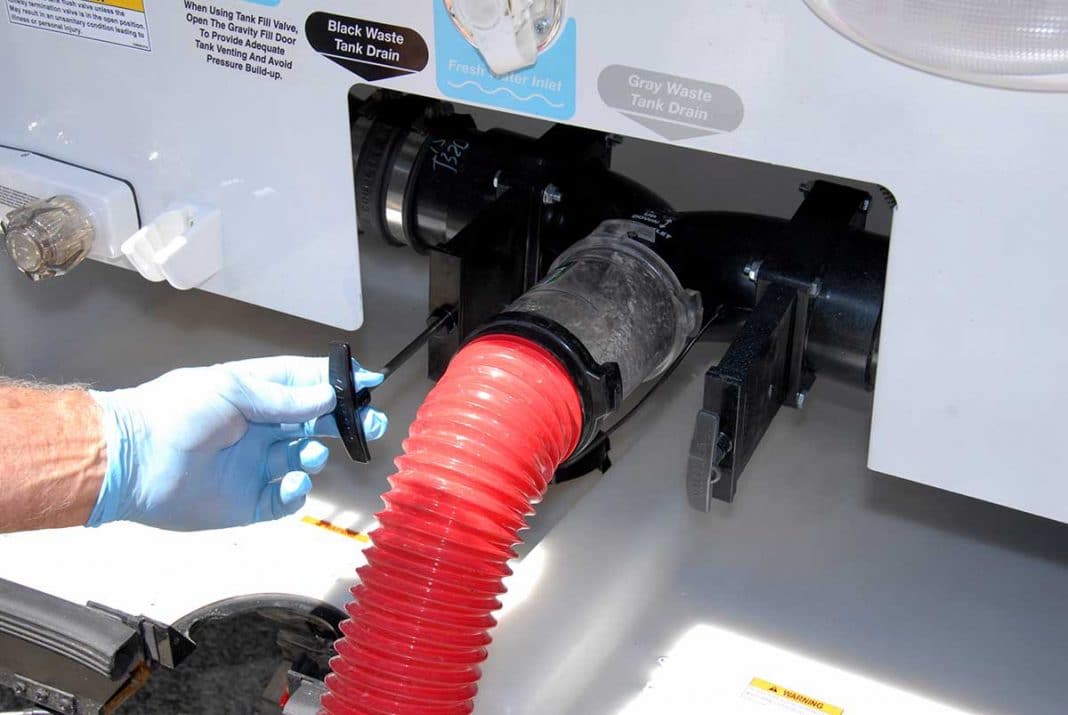
Dump the Tanks
You already know you should dump the black and gray tanks, but make sure to flush and drain them thoroughly. Depending on how much time you’ve spent in the RV, you may also consider using a gray-water tank cleaning product to prevent odors. Completely drain the freshwater tank using the low-point drain, and open all faucets to evacuate the remaining water in the system.
Drain the Water Heater
If the water heater has an anode rod, check its condition and replace if necessary. In any case, use a flushing wand on the end of a garden hose to remove any rust or debris at the bottom of the tank after draining.
Winterize the Plumbing System
If you live in a climate where the RV will be exposed to consistent freezing temperatures, have it winterized by a qualified service center. If you’re a confident DIYer, you can also do this yourself. Just make sure to follow the manufacturer’s directions closely. An improperly winterized system can result in expensive damage from split pipes.
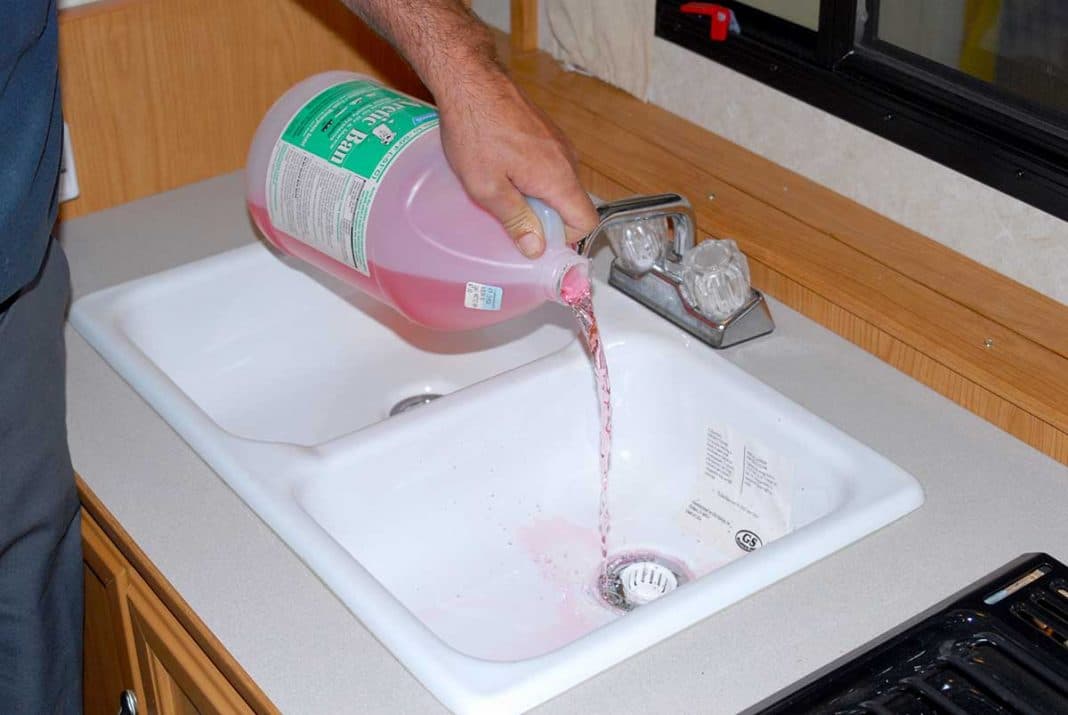
Add Antifreeze
If the RV may be exposed to freezing temperatures, but not constantly, put some RV antifreeze in each sink trap, toilet and shower/tub drain. This will help prevent water in these locations from freezing and causing damage.
Circulate the Air
It may seem counterintuitive, but keep one or more roof vents partially open so air can circulate within the RV. If you don’t intend to cover the RV, use a roof-vent cover, like those from Maxxair, which will keep rain and snow out while letting air in. If you store your rig in a dry, dusty area, keep the vents open but use a properly fitting, high-quality RV cover to keep dirt out of the interior.
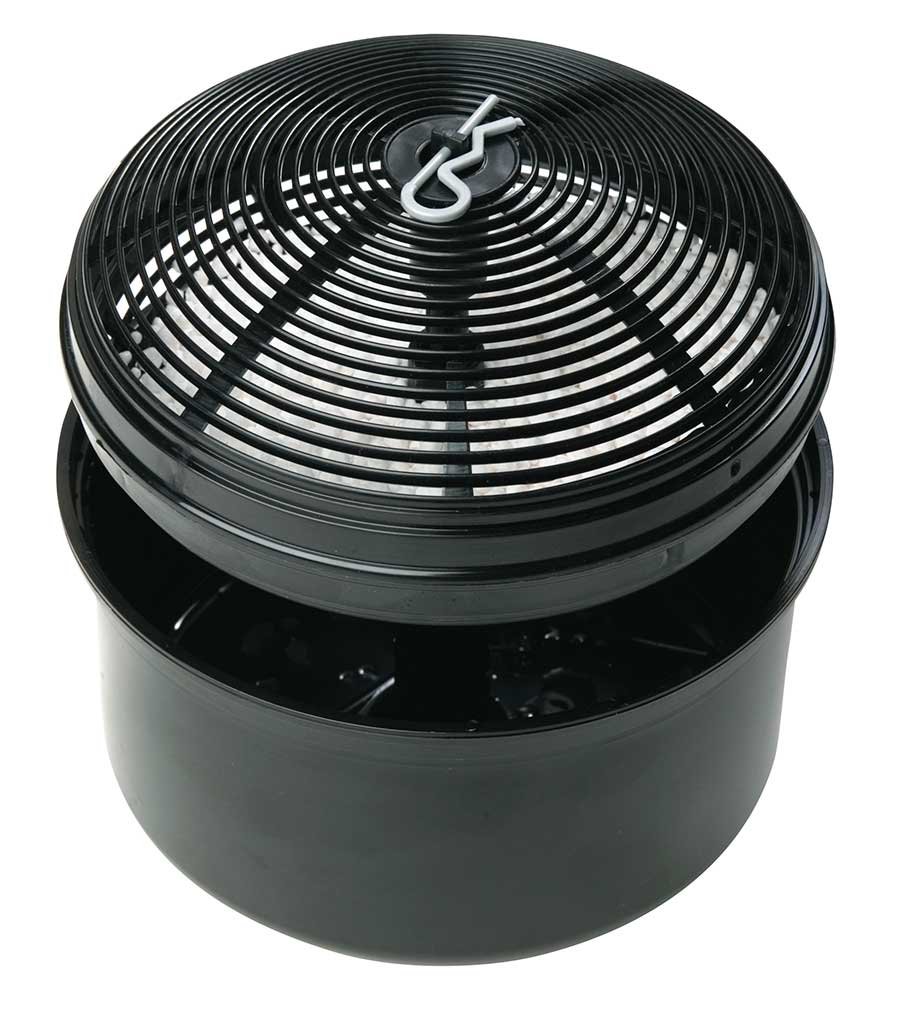
Dry the Air
Most areas experience wet weather during the winter months, so make sure to use some form of desiccant product to remove moisture from the air. If you’re plugged in at your home, leave a dehumidifier running. This will prevent wood cabinets from warping and upholstery and carpet from mildewing. Just make sure to remove the water from the desiccant bucket or humidifier on a regular basis.
Preserve the Batteries
Charge, then disconnect and remove the batteries. Extremely cold or hot weather can shorten battery life, so it’s a good idea to keep them at home if this is the case. Place them on wooden blocks and attach a maintenance (“trickle”) charger so they’re ready to go when you are.

Photo Credit: Getty
Protect the Tires
Make sure the tires are properly inflated to prevent “flat spots” caused by underinflation. Use tire covers to protect them from ultraviolet rays in sunny areas. Also, keep in mind that tires that sit for extended periods in water or on concrete can rot or crack, so place each tire on a heavy plywood square where it’s dry and can breathe.
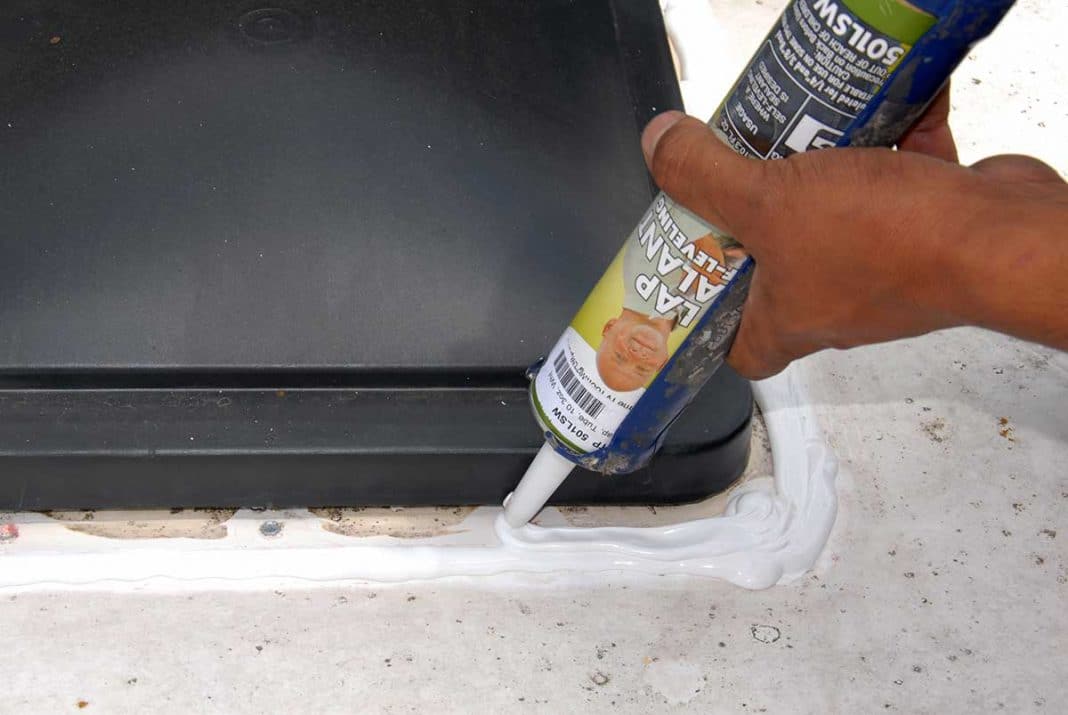
Inspect the Exterior
Thoroughly wash the outside of the RV, and if it has a rubber roof, use one of the many available products on the market to help keep it protected. Check for any cracks or loose sealant that may allow moisture in, and patch or fill as needed.
Keep the Fuel Fresh
Be sure to run treated fuel through the generator if you have one. Owners of toy haulers equipped with fuel tanks should add fuel stabilizer and fill the tanks to prevent condensation. Fuel stabilizer also prevents corrosion, varnish, and gumming and keeps stuff from growing in the tank, especially for diesel.
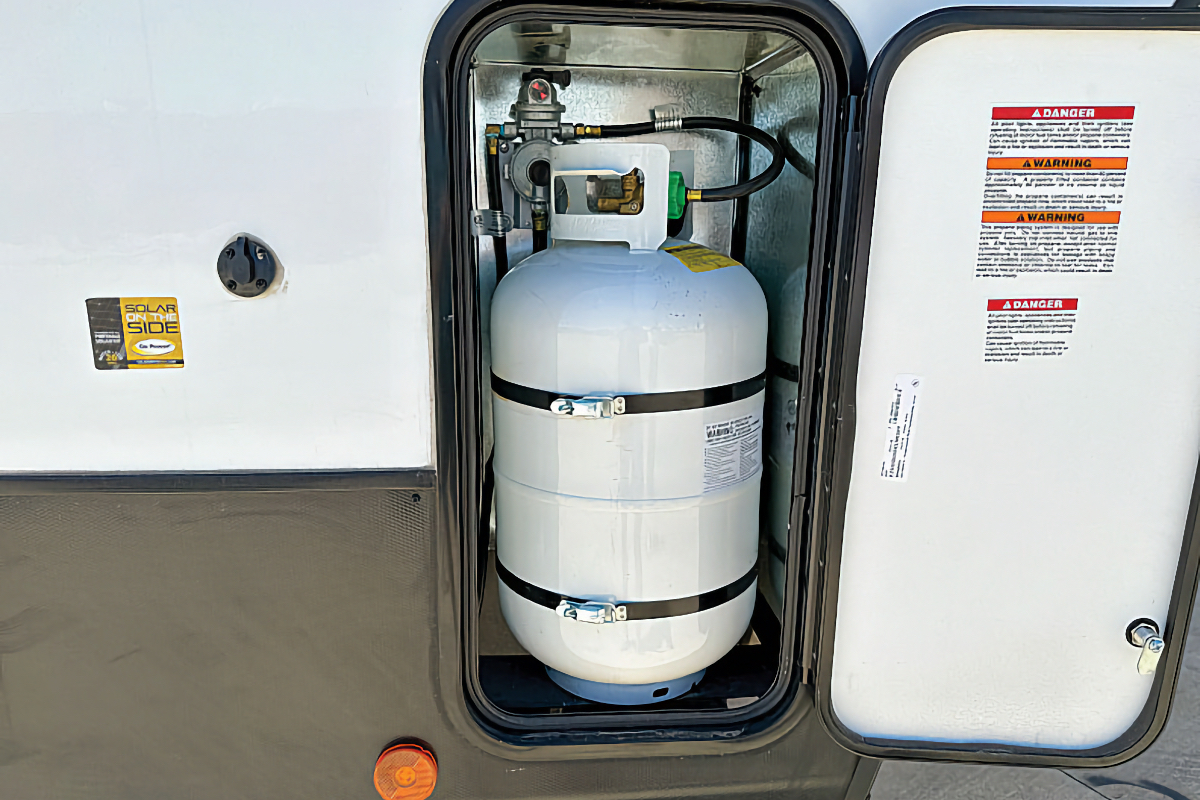
Photo Credit: James Adinaro
Top Off the Propane
Fill and inspect the propane cylinders, mount, fittings, and hoses, and close the valve for storage. Refill the tanks in the spring so they’re ready to go for a new camping season.
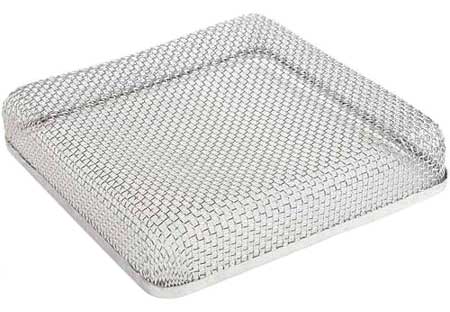
Prevent Pests
Some bugs love the smell of LP gas, and mud daubers can block important areas like igniter tubes and flus. Cover the openings to the water heater and refrigerator compartments with RV screens designed to keep out flying pests and keep them clean.
Schedule Repairs
If the RV requires repairs that need to be completed at an RV service facility, the off-season is the best time to get them done. Those facilities tend to be much less busy in the winter than they are in the spring, which will save you time—and possibly money—when you’re ready to hit the road again.
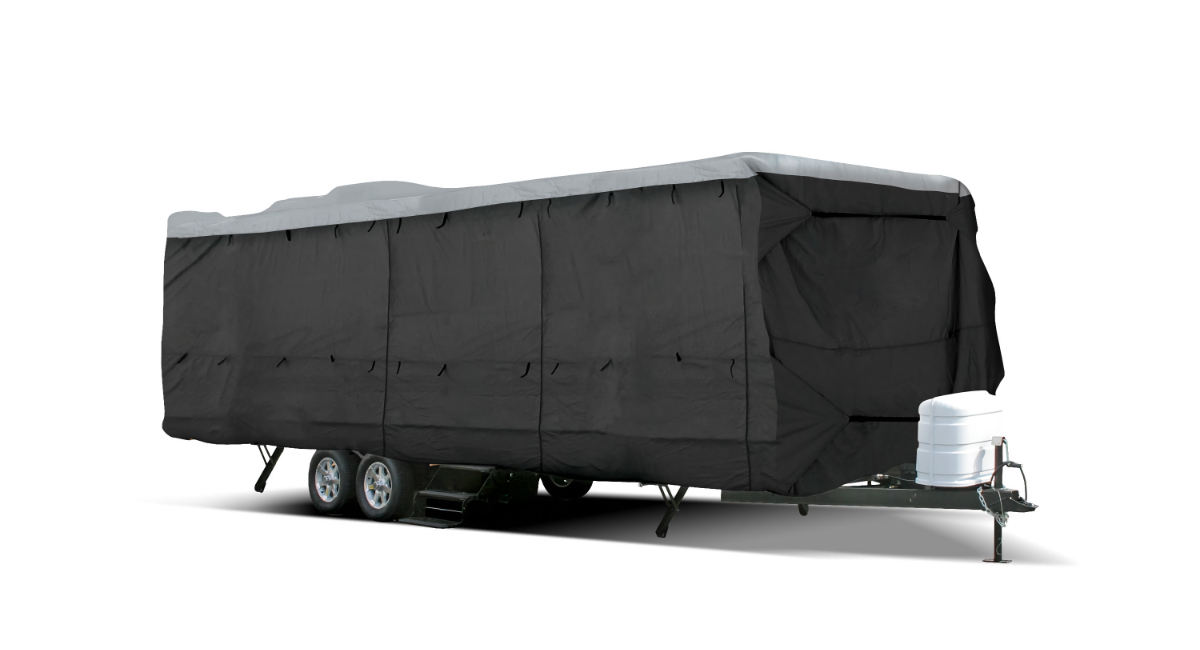
Image Courtesy of Camco
Cover the RV
If your motorhome or travel trailer isn’t stored in a garage, then it is a good idea to invest in an RV cover and skirt to protect it from the elements. This helps prevent snow and ice from getting under the vehicle or even reaching the interior, preventing potential damage in the process. It will also help keep rain, freezing rain, dirt, and wind from damaging the exterior, keeping the RV looking—and performing—great after it comes out of its long winter nap.
That’s our list of the most important things you should do to winterize your RV. Taking these steps will ensure it goes into storage in good condition and is ready for use when the weather starts to warm back up. Proper maintenance and care will also add years to the life of your vehicle and save you money in the long run. A little TLC now means your motorhome or trailer will be ready to go for many adventures to come.



